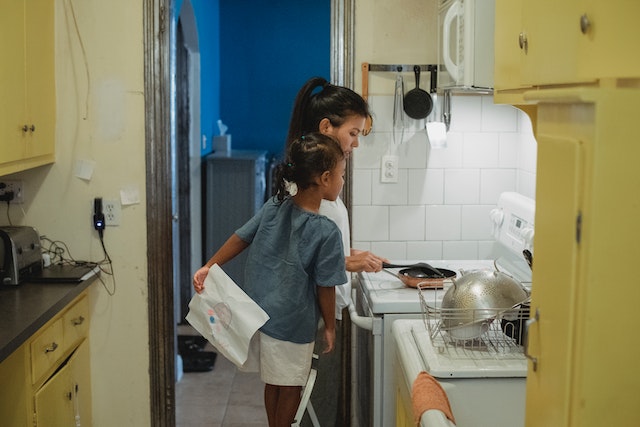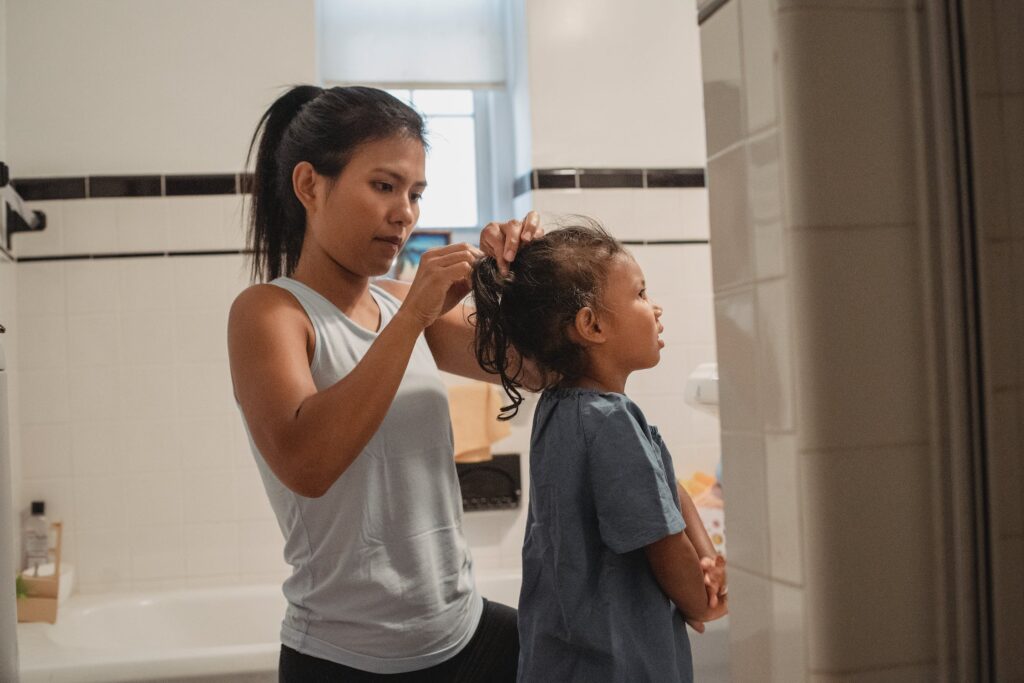The Gap of Generations by Dalet Valles
Latina mothers and daughters face a generational gap.

Not many countries offer second chances. The U.S. gave me that.
Jorge Ramos
Whether she crossed the border with false documentation or walked in rivers that pass through Mexico and the United States, immigrant women sacrifice their lives for a dream that can shape their future. In the United States, the Latina population makes up nearly 18 percent of the total population, totaling around 30 million. Yet, Latinas face opportunity gaps within their own population and overall population.
WITHIN THEIR OWN
Latina women in Latin America, the United States, and all around the world have faced opportunity and generational gaps within their own culture. Women within the culture are often given certain roles which fit with Marianismo, which emphasizes that the role of a woman is rooted in the family and home.
According to the National Library of Medicine, “Marianismo is rooted in Christian values brought to Latin America during colonization, which defined women as nurturing figures and spiritual pillars of the family; it is a construction of the expected female gender roles based on the Virgin Mary.”
Stereotypes among Latinas being housewives, stay-at-home moms, and much more stem from Marianismo ideology. Despite the women in the culture having strong roots in their familial structure, the next generation has begun to break the pillar of imposed roles.
CHANGING STRUCTURES
As changes come to the family, Latina women begin to change the familial structure. In the U.S., 41 percent of Latino children are raised by single parents, often women. According to the APA, “Since the overwhelming majority of deportees are men, remaining women often abruptly become single mothers in charge of all financial, household and childcare responsibilities.” Though it is common for undocumented parents to immigrate together, often times men get deported to their home country.
In 2014, the U.S. Census Bureau reported that the immigrant women population totaled 5.6 million. According to the American Psychological Association (APA), “approximately 79 percent or 4.1 million children of undocumented parents were U.S. citizens in the time period of 2009-2013.” Despite a large number of children being U.S.-born, it is not uncommon for them to face gaps in opportunities not only in comparison to the generation before them but their own generation.
GROWTH OF GAPS
In 2016, according to the Population Reference Bureau, one-fourth of the children in the U.S. are Latinos. Additionally, 95 percent of the 18.2 million Latino children in the U.S. are U.S.-born citizens.
“In 2015, 58 percent of Latino youth still lived in just four states: California, Florida, New York, and Texas,” states the Population Reference Bureau.
Since many Latino children are second-generation — Latinos born in the United States to immigrant parents — they experience a gap. Though the status of their parents is not their own, often the provisions allotted to them limit their opportunities, just as it affects their undocumented parents.

“Studies find that parental legal status has long and short-term consequences on citizen children,” said the authors of Parents Without Papers: The Progress and Pitfalls of Mexican American Integration. “Studies find that U.S.-born children of undocumented immigrants have lower educational attainment…”
Despite being born in a country that provides opportunities to its citizens, Latino U.S.-born children continue to face barriers. This may be their enrollment in English Langauge Development (ELD), a program designed to assist students develop proficiency in English. Children enrolled in this program are heritage speakers of another language. In California, 82.03 percent of students are Spanish speakers, according to the California Department of Education.
LATINA PURSUING EDUCATION
As education continues to be a dream for generations of Latinos entering the U.S., many women who immigrate to America seek higher education. In a 2021 research study conducted by Excelencia in Education, 27 percent of Latinas 25 years or older received a high school diploma or a GED. 27 percent of women in that same demographic have educational experience less than high school.
However, Latinas have made their way into colleges and universities. According to that same study, Latinas account for 48 percent of the women population at Hispanic Serving Institutions. Of all Latino students, Latinas total 60 percent of the overall Latino population. 29 percent of Latinas 25 years or older pursue and complete higher education. 8 percent of Latinas 25 or older earned an associate degree, 14 percent earned a bachelor degree, and 7 percent earned a graduate degree. The amount of Latinas pursuing and attaining degrees has and continues to increase, totaling around 300,000 in 2020.
BRIDGING THE GAP
Despite barriers begin presented to Latinas and children of immigrant parents, the future continues to define the gap noted across generations. In research done by Salud America, Latinas are beginning to bridge the gap within career and educational settings. Opportunities that were once limited to the generations before have now slowly become attainable.
Salud America reports that 16 percent of the women workforce is Latina. The American Association of University Women reports that Latinas within the workforce have increased from 55.9 percent to 57.7 percent over the past 20 years.
CONTINUOUS CHANGE
Change for Latinas within their own culture and around all cultures is still continuous. Latinas and their children continue to face gaps that, despite being lessened, continue to impact their daily lives. According to the U.S. Department of Labor Blog, white women earn $0.79 to a man’s dollar, while Latina’s earn $0.57 to that. Despite attaining a degree, Latina women will still only make $0.74 to a man’s dollar.
Second-generation Latinas are beginning to break the barriers and incite change that unfortunately created opportunity gaps among the generations.